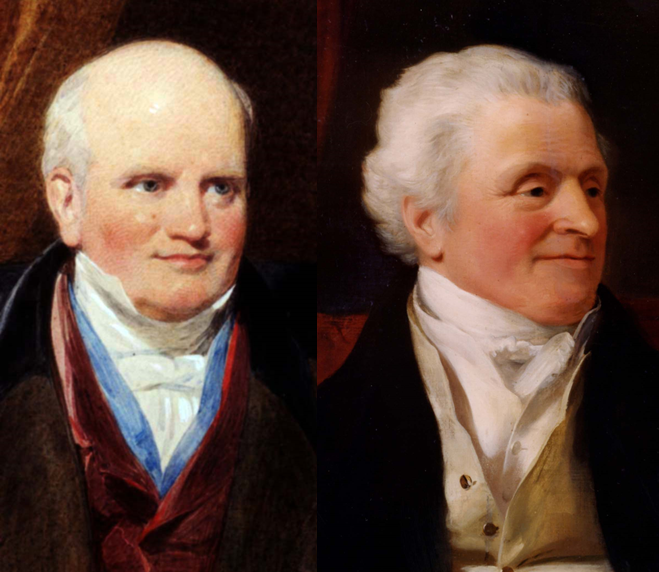Key Figures – William Strutt and his brothers

Key Figures – William Strutt and his brothers
The development of the Belper and Milford mill sites and the Strutt mill in Derby owed much to William Strutt’s engineering skills and creative talents.
The clearance of the Belper and Milford sites c.1960 removed a range of mill structures which, taken together, demonstrated the evolution of William Strutt’s experiments in fire-proofing mill buildings. Of his mill structures, only the North Mill at Belper remains. This remarkable building emerged in 1804 from the burned out shell of Strutt’s second Belper mill. William Strutt used cast iron and brick, incorporating improvements derived from the systems Bage had used in his fire-proof structures at Shrewsbury and Leeds.
William Strutt’s contributions to the Derwent Valley sites continued with the Belper reeling mill in 1808; the South Mill in 1812 (a replacement of the first of the Strutt mills in Belper); and in 1813, the Round Mill, said to have been modelled on the idea of the Panopticon of Samuel and Jeremy Bentham. He also turned his hand to the improvement of mill machinery and is said to have introduced his own version of mule spinning years before it was successful elsewhere.
Unlike the Arkwrights, whose enthusiasm for the cotton industry scarcely outlived Sir Richard, the Strutts continued to innovate, invest and expand – at least while Jedediah’s three sons, William (1756-1830), George Benson (1761-1841), and Joseph (1765-1844) ran the business. During the first quarter of the 19th century it remained a major force in the industry, employing by 1833 as many as 2,000 people. But the centre of the industry had moved north to Lancashire. The business was no longer well served by its location, both in relation to raw materials, the market and for access to new developments.
The Strutts also maintained a commitment to child employment long after it had become clear that with machinery growing in size and complexity the proportion of adults or at least older children employed would have to increase. The Strutts tried to swim against this tide. In Anthony Radford Strutt’s words, “infant labour being so much cheaper than adult, one’s attention is always directed to make such improvements in machinery as to enable children to do with ease and exactness the work of adults” (1833). The scale of the operation gradually contracted and during the second half of the 19th century, some of the Milford site was given up and let out to other businesses.
When Edward Strutt (1801-80), William’s only son, received a peerage in 1856, taking the title ‘Lord Belper’, the appointment was welcomed in the press as the elevation of a manufacturer, implying that Edward Strutt still earned his living as a cotton master. If he did, and certainly he was still engaged in the business, it was on a very different basis to the daily toil his father’s generation had known. Day-to-day management had passed to paid staff. The Strutts, a generation later than the Arkwrights, came to enjoy a life of landed gentility.

